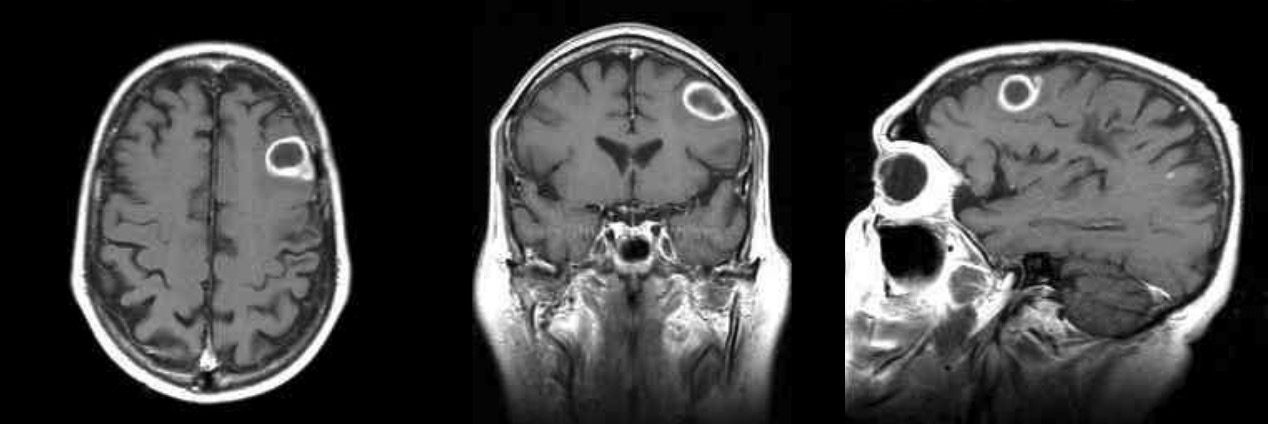Playlist
Show Playlist
Hide Playlist
Bacterial Meningitis: Treatment
-
Slides CNS Infections Meningitis.pdf
-
Download Lecture Overview
00:00 But how do we treat these patients? Our patient who presents with a prominent bacterial infection needs antibiotics quickly. What should we pick? Well the type of treatment is going to vary by the age of the patient. We see that in young neonates, certain types of bacterial processes are more common than what we see in children and adolescents and into adults. In neonates less than 1 month of age, the most common bacterial organisms you can see here group B strep accounting for 50% of bacterial meningitis, E. coli, listeria, Strep pneumoniae, and klebsiella. So we're going to select an antibiotic cocktail that will cover those agents and typically that's ampicillin which is important for covering listeria and an aminoglycoside which is important for broad coverage of the other organisms that you see here. In children of the age of 1-23 months, we see a shift in the causative organisms, we see more Strep pneumoniae, Neiserria meningitis, and we don't see a lot of H. flu anymore given that many patients are vaccinated against this, and we pick antibiotics that will target those agents. And typically a 3rd generation cephalosporin like ceftriaxone and vancomycin for our gram positive coverage. We await cultures from our spinal tap and we refine antibiotics based on our culture data. In individuals age 2-18 years, we see a slight shift in the organisms, neiserria becomes more common in Strep pneumoniae but both are still common organisms to cause meningitis in children and adolescents. Group B strep is uncommon and listeria is very uncommon in this age group, but can be seen in certain populations particularly college age students or military individuals or people in close proximity to others. And we pick organisms to cover against those agents. We see ceftriaxone and vancomycin used and if we're worried about listeria particularly in those selected populations, we add in ampicillin which provides good coverage for listeria. As we age into adulthood, ages 19 or so to 60, we see, again, certain types of organisms, we're back to that Strep pneumoniae, Neiserria meningitides, and H. flu with a slight increase in this age group and we use agents that cover those organisms, 3rd generation cephalosporin and vancomycin for gram positive coverage. And then in elderly patients, which is defined in the literature, is greater than 60 years of age we see Strep pneumoniae, listeria increases in its frequency again, and some group B strep. So again, ceftriaxone and vancomycin are the backbone of initial management of these patients and because of the frequency of listeria we need to add in ampicillin. So important to think about the age of the patient and the type of bacteria when we're selecting the appropriate antibiotics.
About the Lecture
The lecture Bacterial Meningitis: Treatment by Roy Strowd, MD is from the course CNS Infections.
Included Quiz Questions
What is the first-line empiric treatment regimen for bacterial meningitis in neonates?
- Ampicillin + aminoglycosides
- Amoxicillin + clavulanic acid
- Levofloxacin + azithromycin
- Vancomycin + ceftriaxone
- Tetracycline + cefepime
What is the first-line empiric treatment regimen for bacterial meningitis in the elderly (age > 60 years)?
- Ceftriaxone + vancomycin + ampicillin
- Ceftriaxone + vancomycin
- Ampicillin + aminoglycosides
- Ceftriaxone + acyclovir
- Vancomycin + meropenem
Customer reviews
5,0 of 5 stars
| 5 Stars |
|
5 |
| 4 Stars |
|
0 |
| 3 Stars |
|
0 |
| 2 Stars |
|
0 |
| 1 Star |
|
0 |




